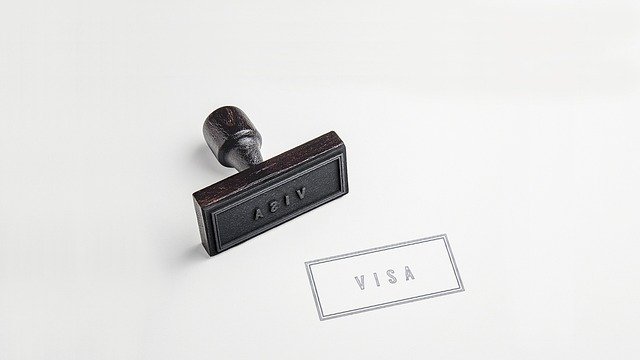Comprehensive Guide to United States Work Visa Programs: Explore Your Options in 2025
Working in the United States requires proper authorization through various visa programs designed for different professional circumstances. Understanding the types of US work visa options available helps international professionals navigate the complex immigration system effectively. Each visa category serves specific employment situations, from temporary skilled workers to permanent residents, with distinct requirements and application procedures.

What Are the Main Types of US Work Visa Options?
The US immigration system offers multiple work visa categories to accommodate diverse professional needs. H-1B visas serve specialty occupations requiring bachelor’s degrees or higher, typically in technology, healthcare, and engineering fields. L-1 visas facilitate intracompany transfers for executives, managers, and employees with specialized knowledge moving between international offices.
O-1 visas target individuals with extraordinary abilities in sciences, arts, education, business, or athletics. E-2 treaty investor visas allow nationals from specific countries to work in businesses they substantially invest in. TN visas serve Canadian and Mexican professionals under NAFTA agreements, while J-1 exchange visitor programs cover temporary educational and cultural exchanges.
How Do US Employment Visa Categories Differ?
US employment visa categories fall into temporary (nonimmigrant) and permanent (immigrant) classifications. Temporary visas include time-limited authorizations like H-1B (three years, extendable to six), L-1A (seven years maximum), and L-1B (five years maximum). These require employer sponsorship and specific job offers.
Permanent employment visas lead to green cards through employer sponsorship in three preference categories. EB-1 serves priority workers with extraordinary abilities, outstanding professors, and multinational executives. EB-2 covers advanced degree professionals and individuals with exceptional abilities. EB-3 includes skilled workers, professionals, and other workers requiring less specialized qualifications.
Each category has numerical limits and different processing times. EB-1 typically processes faster than EB-2 and EB-3, which often face significant backlogs, particularly for applicants from India and China.
What Is the Application Process for US Work Visas?
The application process for US work visas involves multiple steps requiring careful coordination between employers and applicants. Most employment-based visas begin with employer petitions filed with US Citizenship and Immigration Services (USCIS). Employers must demonstrate legitimate business needs and, in many cases, complete labor certification processes proving no qualified US workers are available.
For H-1B visas, employers file Form I-129 petitions, often requiring prevailing wage determinations and Labor Condition Applications. L-1 applications need evidence of qualifying relationships between US and foreign companies, plus documentation of the employee’s role and qualifications.
Once USCIS approves petitions, applicants outside the United States must apply for visas at US consulates in their home countries. This involves completing DS-160 forms, scheduling interviews, and providing supporting documentation including educational credentials, work experience proof, and financial evidence.
Processing times vary significantly. Premium processing is available for certain visa types, guaranteeing 15-day responses for additional fees. Regular processing can take several months to over a year, depending on the visa category and current caseloads.
| Visa Type | Processing Time | Government Fees | Premium Processing |
|---|---|---|---|
| H-1B | 3-6 months | $460-$2,460 | $2,805 (15 days) |
| L-1 | 3-8 months | $460-$2,460 | $2,805 (15 days) |
| O-1 | 2-4 months | $460-$1,435 | $2,805 (15 days) |
| EB-1 | 8-24 months | $700-$3,005 | Not available |
| EB-2/EB-3 | 1-5 years | $700-$3,005 | Not available |
Processing fees and timelines mentioned in this article are based on current USCIS fee structures but may change over time. Independent research is advised before making financial decisions.
What Documentation Do Work Visa Applications Require?
Work visa applications demand extensive documentation proving eligibility and qualifications. Educational credentials require evaluation by approved agencies to demonstrate US equivalency. Employment letters must detail job duties, salary information, and company details. Financial documents show ability to support oneself during the stay.
Professional licenses and certifications relevant to the position strengthen applications. For specialized visas like O-1, applicants need evidence of extraordinary achievements such as awards, published articles, or expert testimonials. L-1 applicants must document their roles in foreign companies and demonstrate specialized knowledge or executive responsibilities.
Medical examinations are required for certain visa categories and immigrant visa applications. Police clearances from all countries where applicants lived for extended periods are typically necessary for permanent visa applications.
The United States work visa system offers multiple pathways for international professionals seeking employment opportunities. Success depends on understanding specific requirements for each visa category, preparing thorough documentation, and navigating the application process strategically. While the system can be complex, proper preparation and professional guidance help maximize approval chances for qualified applicants seeking to build careers in the United States.




